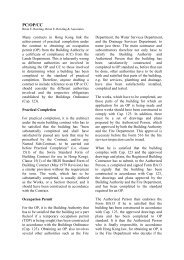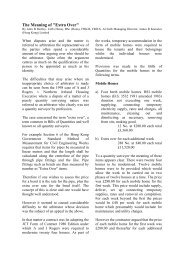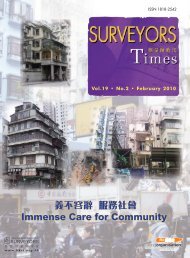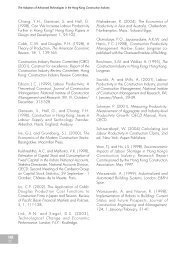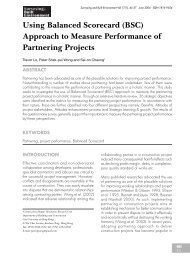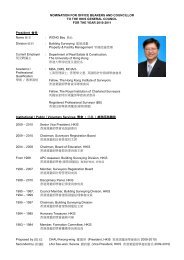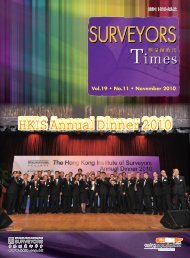Special issue to commemorate the 70th Anniversary of the Battle of ...
Special issue to commemorate the 70th Anniversary of the Battle of ...
Special issue to commemorate the 70th Anniversary of the Battle of ...
Create successful ePaper yourself
Turn your PDF publications into a flip-book with our unique Google optimized e-Paper software.
Chinese Eyes on British Tanks:<br />
His<strong>to</strong>rical Verification <strong>of</strong> a War Heritage<br />
Ho-yin Lee*<br />
Abstract<br />
This paper is about a British military tradition with a Chinese connection. It has taken <strong>the</strong> author several years <strong>of</strong><br />
research <strong>to</strong> dispel <strong>the</strong> myth that has long shrouded <strong>the</strong> true origins <strong>of</strong> a regimental tradition <strong>of</strong> <strong>the</strong> 1st Royal Tank<br />
Regiment <strong>of</strong> <strong>the</strong> British Army. This tradition is <strong>of</strong> a pair <strong>of</strong> eyes, known as <strong>the</strong> “Chinese Eyes,” painted on <strong>the</strong><br />
bows or turrets <strong>of</strong> British tanks from World War I <strong>to</strong> <strong>the</strong> present day. As such, <strong>the</strong> “Chinese Eyes” can be regarded<br />
as intangible heritage expressed on <strong>the</strong> tangible hardware <strong>of</strong> <strong>the</strong> British Army. Using <strong>the</strong> research methodology for<br />
architectural conservation, <strong>the</strong> author attempts <strong>to</strong> rediscover obscure his<strong>to</strong>rical evidence, using it <strong>to</strong> chronologically<br />
reconstruct <strong>the</strong> events leading <strong>to</strong> <strong>the</strong> creation <strong>of</strong> this tradition.<br />
KEYWORDS<br />
Military heritage, his<strong>to</strong>rical research, interpretation, au<strong>the</strong>nticity.<br />
INTRODUCTION:<br />
METHODOLOGY AND ORIGINS<br />
OF RESEARCH<br />
It is a little known fact that British tanks, produced<br />
in <strong>the</strong> thousands during World War I, were cared for<br />
by <strong>the</strong> skillful hands <strong>of</strong> <strong>the</strong> Chinese Labour Corps.<br />
(Fawcett 2001: 43-44). Who would have thought<br />
that <strong>the</strong>re is such a seemingly improbable connection<br />
between Chinese men and British war machines? More<br />
incredibly, who would have thought that a Chinese<br />
individual – an individual with an indirect link <strong>to</strong> Hong<br />
Kong – was responsible for creating a famous military<br />
tradition for British tanks – a pair <strong>of</strong> eyes, known as <strong>the</strong><br />
“Chinese Eyes” that have been painted on <strong>the</strong> tanks <strong>of</strong><br />
one <strong>of</strong> <strong>the</strong> battalions <strong>of</strong> <strong>the</strong> Royal Tank Regiment <strong>of</strong> <strong>the</strong><br />
British army since World War I. The research leading<br />
<strong>to</strong> this paper was focused on finding out <strong>the</strong> origins <strong>of</strong><br />
this military tradition. For this purpose, <strong>the</strong> research<br />
methodology is borrowed from that for architectural<br />
conservation, and specifically, from <strong>the</strong> Burra Charter,<br />
one <strong>of</strong> <strong>the</strong> most <strong>of</strong>ten used international charters for <strong>the</strong><br />
conservation <strong>of</strong> heritage buildings and sites <strong>of</strong> cultural<br />
significance,<br />
To understand what makes a place special, you will<br />
usually need <strong>to</strong> know about its his<strong>to</strong>ry – why was it<br />
created, was it extraordinary, why was it put in that<br />
location, how was it used, and how has it changed.<br />
(Marquis-Kyle and Walker 1992: 12)<br />
While <strong>the</strong> above methodology caters specifically <strong>to</strong><br />
architectural heritage, it can equally be applicable <strong>to</strong><br />
such military tradition as <strong>the</strong> “Chinese Eyes.” Hence,<br />
echoing <strong>the</strong> words <strong>of</strong> <strong>the</strong> Burra Charter, <strong>to</strong> understand<br />
what makes <strong>the</strong> “Chinese Eyes” tradition special,<br />
we will need <strong>to</strong> know about its his<strong>to</strong>ry – why it was<br />
created, whe<strong>the</strong>r it was extraordinary, why it was put<br />
on a tank, and how it has changed. The why and how<br />
<strong>of</strong> <strong>the</strong> “Chinese Eyes” essentially define <strong>the</strong> research<br />
questions, <strong>the</strong> answer <strong>of</strong> which is what this paper is<br />
about.<br />
The research on <strong>the</strong> his<strong>to</strong>ry <strong>of</strong> <strong>the</strong> “Chinese Eyes”<br />
began in May 2006, when <strong>the</strong> author came upon <strong>the</strong><br />
website hosted by Mr. Douglas Greville, a New South<br />
Wales-based armour enthusiast and collec<strong>to</strong>r. On <strong>the</strong><br />
website, <strong>the</strong>re is an account <strong>of</strong> a fellow tank collec<strong>to</strong>r<br />
*Associate Pr<strong>of</strong>essor, Department <strong>of</strong> Architecture; Direc<strong>to</strong>r, Architectural Conservation Programme (ACP), Faculty <strong>of</strong> Architecture, The<br />
University <strong>of</strong> Hong Kong.<br />
E-mail: hoyin@hku.hk<br />
SBE<br />
12




